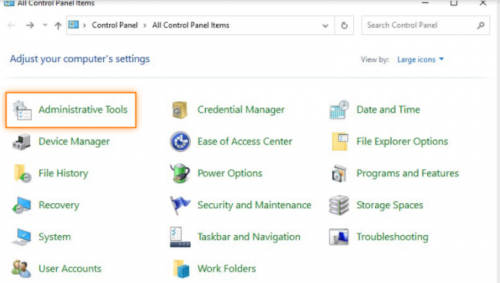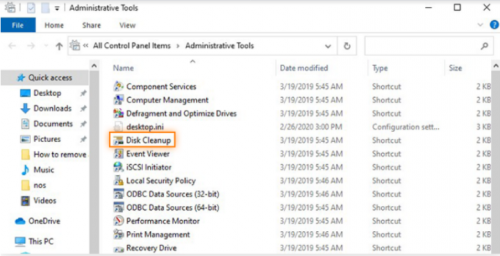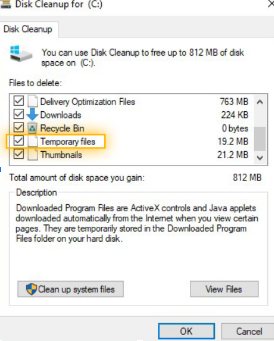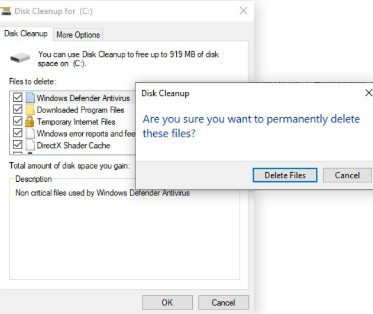How to Get Rid of a Virus [Prevention & How to Spot One]
 Fact-checked
Fact-checked
Last Updated: February 2, 2023
Computer viruses can cause a lot of damage to your computer, which is why you should be wary that your device doesn’t become infected with one. But if it does happen, there’s no reason for despair. This article addresses how you can prevent computer viruses, how to recognize them, and how to get rid of a virus.
What Is a Computer Virus?
A computer virus is similarly designed like a regular virus and can self-replicate and spread from host to host. Computer viruses need a host to replicate, so they attach to files or documents that take on the role of hosts. A computer virus is a program or malicious code that aims to alter computer operations and spread from one computer to another.
Viruses can spread via spam email, text messages, pop-ups, suspicious apps, social media links, internet downloads, or external storage devices (USB sticks or disks). To avoid contracting a computer virus, you should be cautious about opening any suspicious links and emails and steer clear of shady files and downloads.
How Do Viruses Work?
The best way to get rid of a virus first entails understanding the principles upon which viruses operate. A virus inserts itself or attaches to a legitimate program within the computer that supports macros to execute its code. Once the virus is attached to a file, a document, or a program, it lies dormant until it’s able to execute the code. When you run the infected program, the virus is activated and infects your computer and other computers connected to the same network.
Viruses can cause a lot of damage to your computer by destroying or corrupting data on your hard drive, stealing passwords and other private information, spamming your email, or, worst-case scenario, taking complete control over your device. Therefore, getting rid of viruses is necessary know-how for any computer user.
| NOTE: Viruses can access your most sensitive information and attempt to steal your identity. To prevent this, you can turn to trustworthy identity theft protection. |
How to Get Rid of a Virus
If you’re inexperienced with malware (malicious software) or don’t know how to get rid of viruses, you can quickly learn and ensure the safety of your device. There are two basic ways to remove malware or a virus: manually or install an antivirus program. Different devices require different approaches for removing malicious programs from systems.
Removing Viruses From PC
The majority of PCs operate on a Windows OS—a system that’s the most common target of computer viruses. So we’ve compiled a list of nine step-by-step instructions on how to remove a virus from a PC.
Download an Antivirus Program/Scanner
Most newer Windows systems have pre-installed antivirus programs, such as Windows Defender or Microsoft Security Essentials. Still, you might want to install additional anti-virus protection for maximum efficiency.
Disconnect From the Internet
Cut your connection so the malware won’t use it to replicate or send malicious data to your contacts. Ensure that both your cable internet and Wi-Fi connectivity are disabled.
Reboot PC and Enter Safe Mode
On your Advanced Boot Options screen, use the arrow keys to highlight the safe mode option you want and then press ‘Enter.’ In safe mode, the PC runs only the minimum number of services required for its operation. Since this step is more advanced, you can follow the official Microsoft guidelines on removing viruses in safe mode.
Erase Temporary Files
There’s a chance that the virus is present in your temporary files or your browser cache. To ensure a virus-free environment, delete all the temporary files and clear the cache data.
- Open the Start menu and select Control Panel from the Windows System drop-down menu.
- Select Administrative Tools
- Open the Disk Cleanup tool from the list of tools.
- Tick all the files you’d like to remove. Erase all temporary files and empty your Recycle Bin.
- After making the selection, click OK and then click Delete Files to confirm.
Run Virus Scan
At this point, you should activate the antivirus software and conduct a full scan to detect any antiviruses.
Delete or Quarantine
After the antivirus program detects the virus, you have two courses of action: delete or quarantine.
Reboot PC
After you’ve deleted the virus, you need to reboot your PC to complete the computer virus removal from your system.
Change Password
Make sure you change any password that might have been affected by the virus.
Update Antivirus Software
Update your software to the latest available version to ensure future virus protection.
Removing Viruses From a Mac
A common misconception is that Mac computers are immune to viruses. Unfortunately, this isn’t true. Macs can get infected as well; although, the chances of this happening are significantly lower than PCs with a Windows OS. But if your Mac does get infected, here’s a seven-point guide on how to remove viruses from it.
- Close the software or program that seems to be affected by the virus.
- Find Activity Monitor and search for any viruses, which can be similarly named to antivirus programs, such as MacDefender, MacProtector, or MacSecurity.
- Suppose you want to know how to remove a virus from a laptop operating on MacOS when you locate any of these viruses. In that case, you should be careful to click Quit Process before quitting the Activity Monitor.
- Locate the Applications folder and drag the entire file into Trash.
- Empty the Trash folder to delete the virus permanently.
- Ensure that all your apps and software are updated.
- Install a running antivirus solution to prevent future virus infections and make sure you know how to remove viruses from laptops.
| NOTE: The first smartphone virus (Commwarrior-A) was created in 2005, which is quite late considering that computer viruses have been around since 1986. |
Signs Your Computer Might Be Infected
Before removing a computer virus, you must recognize some of your computer’s symptoms. We’ve listed six indicators that your computer may contain a virus:
Battery Quickly Drains
Your battery drains because of high CPU and RAM usage. If you’re not doing anything particular to increase such use, it means that a virus is working in the background, draining the battery.
Often Crashes
If you notice that your screen freezes or apps start suddenly crashing, this is almost always a sign of malware presence. Although this could be a result of some other bugs, you should run a virus scan.
Sluggish
An overall slowdown in your computer’s performance is a sign of a virus, noticeable by your work taking significantly longer to get done or the slow web pages loading.
Pop-ups
Many viruses appear as adware, so when you start noticing frequent pop-up windows or error messages, it means that something has infected your computer. Next, you need to figure out how to clean the computer of viruses.
Unknown Programs
If your computer launches unrecognized computer programs on start-up, this is reason enough to suspect virus presence. Your computer should contain only programs that are a part of the system or ones that you’ve installed.
Emails Sent From Your Address
When people begin receiving suspicious emails from your email address—either spam email or email phishing—it means that you should take action.
| NOTE: A staggering 90% of emails contain some type of malware. Although these viruses are not always harmful to the computer, most of them are activated when you click on an attachment or link, not by merely reading the email. |
Tips for Preventing Future Viruses
If you’ve ever had to deal with a computer virus, then you know that it’s a very unpleasant experience. So, if you don’t want to be constantly getting rid of viruses, consider following these six tips for strong protection from viruses.
Ad Blocker
By installing an ad blocker, you ensure that no unwanted pop-ups show up while you’re browsing the internet, and no links will be automatically opened.
Don’t Download From Unknown Websites
If you’re unsure about a shady site, it isn’t advisable to download anything from it.
Backup Data
You need to backup all your data before your computer gets infected with a virus. You can do this by using an external hard drive or on a secure online platform created for this purpose—so you won’t have to worry about getting rid of malware from your files.
VPNs for Secure Connection
Many use a VPN software for online security. If you’re unsure how to choose a VPN provider, check out our selection of the greatest VPN options available.
Pop-ups
You shouldn’t click on pop-up ads, as they often contain virus threats and can infect your device.
Strange Email Addresses
If you see an email from an unknown or suspicious sender, the best course of action is to delete it immediately.
Key Takeaways
| Computer viruses are malicious programs that affect your computer’s performance. |
| You can learn how to get rid of viruses with the help of internet security software, also known as antivirus software. |
| Low battery, slower performance, unknown programs are only some of the signs that your computer might be affected by a virus. |
| Some essential tips that help protect your device from becoming infected by a virus: Use a VPN, backup your data, don’t click on pop-ups. |
| NOTE: There are more than 48.000 known computer viruses active today. You can never be too careful with your online activity. |
Conclusion
Computer viruses are a constant danger for internet users. Everyone needs to know what a virus is and how to detect its presence. What to do when your computer has a virus is a constant concern for many. We’ve addressed some of the practices you can employ so your device can have a lower risk of getting infected by a virus.
FAQ
If you notice any signs of diminished computer performance, such as a low battery or slow speed, and you see any unauthorized programs on your computer. It would be best to use an internet security solution, such as an antivirus program to scan your device for viruses.
In most cases, using your computer’s Safe Mode and antivirus software is enough to isolate the virus, and then you can delete it, along with all the infected components. But some viruses cause more extensive damage, and you’ll need to reinstall the computer’s operating system.
If you want to know how to get rid of a virus on Windows, you first need to install antivirus software on your computer. Then you need to go through several steps to locate and delete the virus. Afterward, you can follow a guide for further instruction.
Some viruses activate within (16 to 18) seconds of getting onto the computer, while others can lie dormant for several days after being downloaded onto a device.










![How to Find Someone’s Tinder Profile? [2024 Expert Guide]](https://review42.com/wp-content/uploads/2023/06/Finding-Someone-on-Tinder.jpg)

